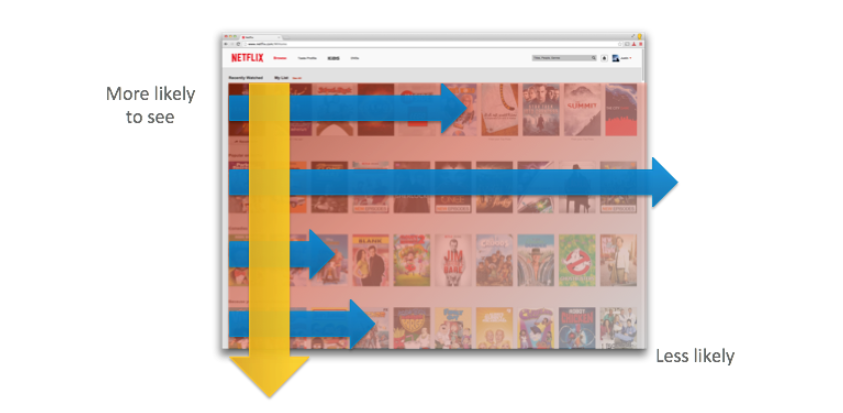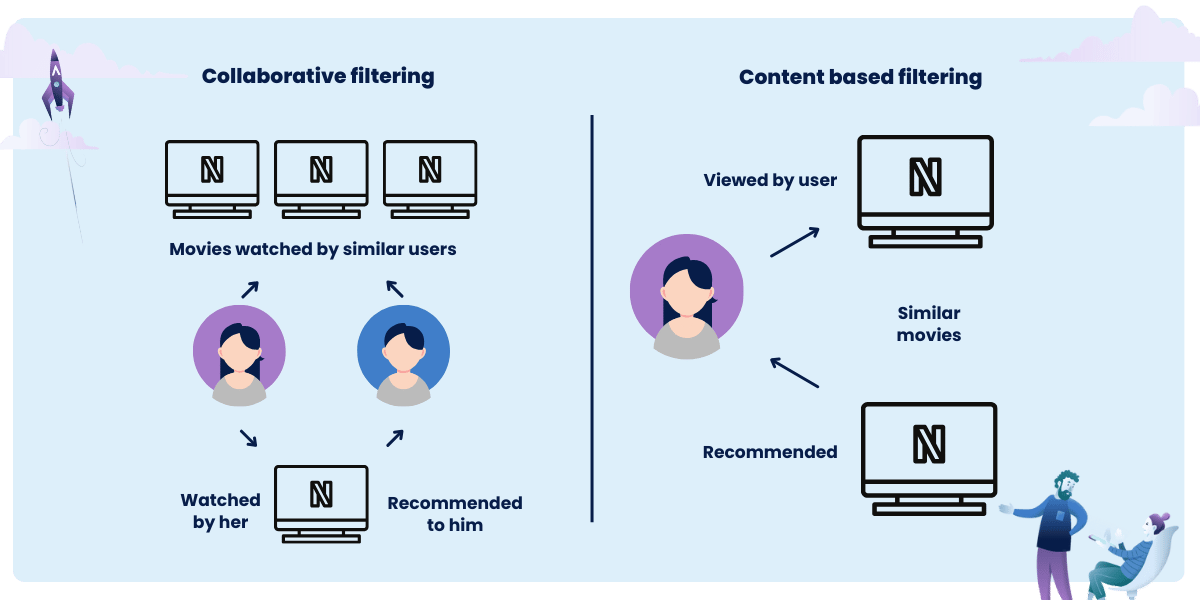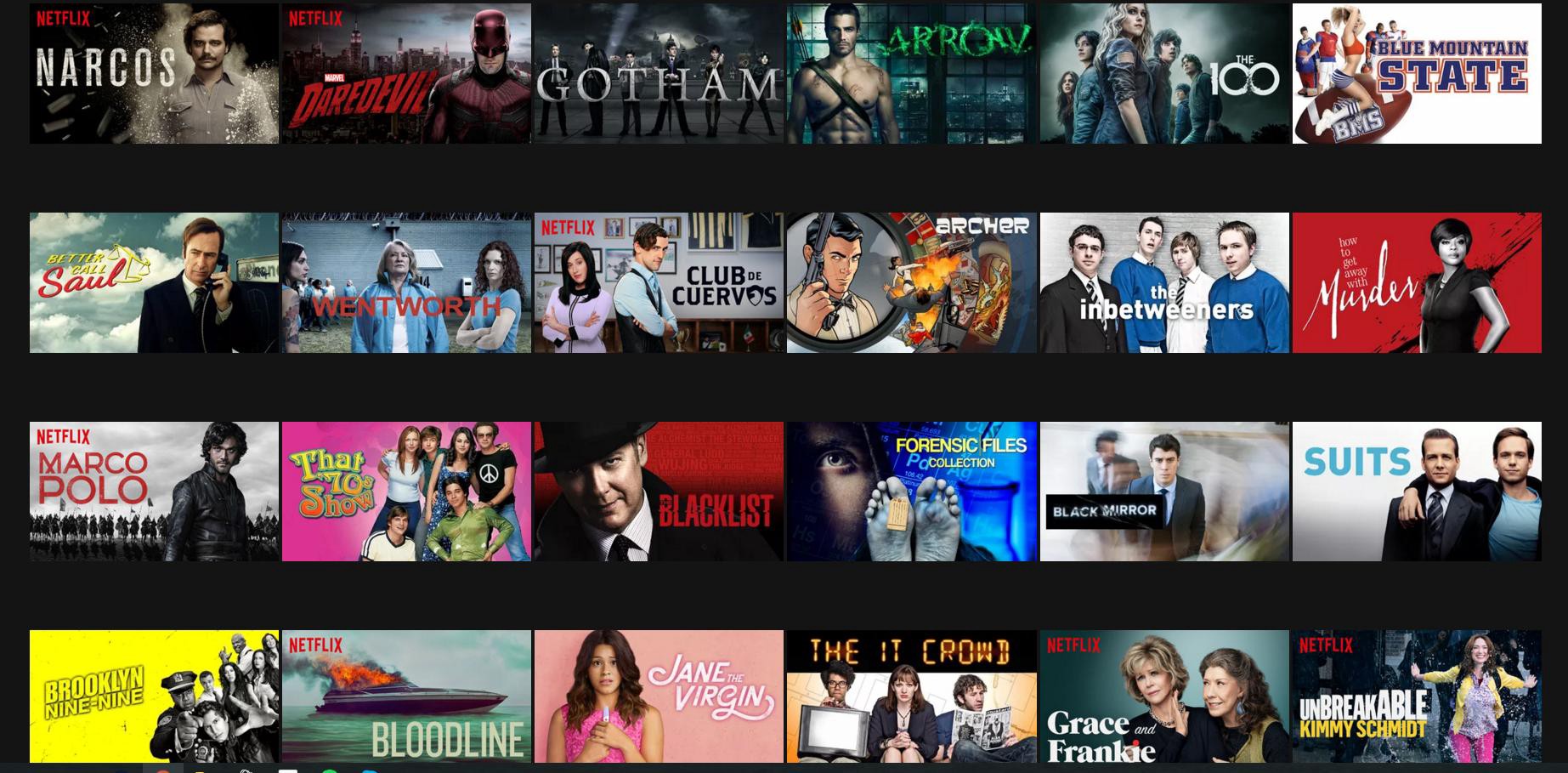
Inside the Netflix Algorithm: AI Personalizing User Experience
When you log into your Netflix, the content and thumbnails you see are not accidental.
The reason you see them, and not other titles from the platform’s vast library of diverse content, is because of its sophisticated recommendation algorithm – a prime example of the smart integration of personalization features in the media industry.
So how exactly has Netflix managed to use artificial intelligence to drive the vast majority of its online traffic? Let’s find out!
Contents
- What Is The Netflix Algorithm?
- How Does Netflix’s Recommendation System Work?
- From Data to Recommendations: The Step-by-Step Process Behind Netflix’s Personalization
- The Role of Big Data and Cloud Computing
- Future of Movie Recommendation Systems
- Value of Netflix Personalized Recommendations: Key Statistics
What Is The Netflix Algorithm?
Last year, Netflix reached more than 230 million subscribers worldwide. With over 15,000 different movies and series in its catalog, it is almost impossible for users to find the movies they like and find interesting on their own.
This is where the personalized recommendation engine comes into play.
For nearly twenty years, Netflix has used various personalization systems to predict and suggest content that users are most likely to enjoy.
As AI technology has evolved, the platform’s algorithms have played a critical role in keeping users engaged and driving Netflix’s global success.
In 2024, according to the platform, more than 80% of content is discovered through personalized recommendations.
How Does Netflix’s Recommendation System Work?
The Beginning: Netflix Prize 2006
Netflix’s machine learning recommendation engine is the result of the work of hundreds of engineers and data science experts over the past 20 years, and is a great example of the power of AI actually delivering tangible results and appropriate ROI for the company.
In 2006, six years after introducing the first personalized movie recommendation system, the company launched the Netflix Prize, a contest that offered $1 million to anyone who could improve the recommendation system by 10%.
The goal of the competition was to improve the existing Cinematch recommendation system, which originally had a root mean square error (RMSE) of 0.9525.
The competition spurred significant advances in machine learning and predictive analytics, culminating in a more sophisticated algorithm that could better understand user preferences.
Basic Concept: How Netflix Transforms Data into Content Recommendations
Netflix recommendation system begins personalizing content as soon as users create a Netflix account, prompting them to select preferred titles to launch the recommendation system.
Users encounter clusters of recommendations in categorized horizontal rows.
To optimize the order of recommendations, Netflix uses a variety of algorithmic techniques, including reinforcement learning, causal modeling, matrix factorization, and bandits.
While these methods are complex, their main goal is to ensure accurate data collection and processing within the algorithm.
How Netflix Captures Your Attention: Smart Layout of Recommended Content
In the previous paragraph, we mentioned that Netflix categorizes recommendations in a horizontal row.
That’s no accident.
Research has shown that users tend to focus on the top left of the screen, so the material most likely to be selected by users is placed to the left of the recommendation rows.
By displaying recommendations with the highest probability of matching the user’s tastes at the top, from left to right, the platform maximizes the effectiveness of its recommendations.

All of these models offer Netflix users a wide selection of movies and shows tailored to their interests, from which they are sure to find something of interest.
[Read also: Online Shopping Recommendations – How to Introduce Them in Your Business?]
From Data to Recommendations: The Process Behind Netflix’s Personalization
With all the basic covered let’s take a look in more detail at how netflix’s recommendation engine transforms data into usable content recommendations in three key steps.
Step 1: Data Collection and Initial User Input

Data is the lifeblood of all recommendation systems, and Netflix is no different.
The platform collects a myriad of data points, such as the time of day users watch content, the devices they use, their geographic location, and even how long they hover over a title before selecting it.
There are two main types of data that Netflix’s recommendation engine collects: content data and user data. The former focuses on the characteristics of the content itself, while the latter focuses on how different users interact with it.
Let’s take a closer look at the types of data connected to user behaviour.
- User Viewing History – movies, shows, and episodes watched, viewing duration for each title, frequency of re-watching specific content
- Average viewing length – How long user typically watch certain content.
- Time of day – When individual users use the website.
- Type of device – On which users view the content.
- User Ratings and Feedback – thumbs up/down ratings, reviews or comments (if available)
- Search History – titles, genres, and keywords searched
- Interaction Data – titles added to “My List,” browsing behavior (e.g., titles hovered over, clicked on), pause, rewind, and fast-forward actions
- Time and Day of Viewing – specific times when content is watched, patterns in viewing habits (e.g., weekend vs. weekday watching)
- Device and Platform Usage – types of devices used (smartphone, tablet, TV, etc.), platform-specific behavior (e.g., mobile app vs. desktop site usage)
Here are types of data about the content itself that Netflix uses in the process of generating its recommendations:
- Genre and Category Information – primary and sub-genres associated with each title (e.g., drama, action, romantic comedy)
- Cast and Crew Data – information about actors, directors, producers, and other key personnel involved in the production
- Content Ratings – age ratings, content warnings, and suitability for different audiences
- Release Date – the original release date of the movie or show
- Viewer Engagement Data – average watch time, completion rates, and user interactions with the title
- Language and Subtitles – available languages for audio and subtitles, including dubbing and closed captions
- Popularity Metrics – how frequently the title is watched, overall ranking within Netflix’s library
- Production and Distribution Details – studio, production company, and distribution partners associated with the title
The general rule of thumb is pretty simple: the more data points we collect the more relevant and accurate recommendations the system can provide.
So how does Netflix’s recommendation engine do all this?
It ensures accurate data collection by closely monitoring user interactions on its platform through its server logs and analytics, such as which titles users watch, how long they watch them, and how they interact with content (such as pausing or skipping).
This real-time tracking is supplemented by metadata collected from content providers. The platform also uses cookies and device data to understand viewing habits across devices and locations.
Step 2: Processing and Analyzing Data

After the data has ben collected it need to be processed and analyzed in order to yield tangible results.
Netflix’s current recommendation algorithm is a hybrid system that integrates various models and techniques, combining collaborative filtering with content-based filtering and deep learning approaches.
Collaborative Filtering Algorithms
In the early days, Netflix used a collaborative filtering approach that relied primarily on user ratings.
This method was used to analyze user data and the behavior of users with similar tastes or search queries to recommend new content, using two main types: user-based and item-based collaborative filtering.
However, as Netflix’s content library and user base grew, it became clear that a more sophisticated recommendation system was needed.
A key takeaway is that in media recommendation systems, unlike e-commerce, a deep understanding of the content itself is often more valuable than simply focusing on similarities between users.
Content based filtering
Unlike collaborative filtering, content-based filtering recommends content based on the attributes of the items themselves.
Content-based filtering works by examining the metadata associated with each piece of content.
This metadata includes a wide range of attributes such as genre, director, cast, release year, language, and even specific themes or keywords that describe the plot and setting. For example, a Avengers Infinity War might be tagged with attributes such as “action,” “superhero,” “Marvel,” “Chris Evans,” and “2018”.
The sheer variety of content on Netflix means that user preferences can vary widely.
Content-based filtering allows the algorithm to cater to niche interests by focusing on the specific attributes of the content.
This is especially important for users with unique tastes that may not align with broader viewing trends.

Netflix actually uses a few subtypes of content-based filtering in its system.
Here is a brief overview of their characteristics:
- Personalized Video Ranking (PVR): PVR is a deep learning-based model that prioritizes video content for individual users by analyzing their historical viewing behavior. The algorithm has the ability to adapt based on user feedback machine learning and thus continuously improve.
- Top-N Ranking: : This model generates a list of the top N video recommendations tailored to the user’s interests. It leverages both collaborative filtering and content-based filtering techniques, optimizing for relevance by ranking content that aligns closely with the user’s previous interactions and preferences.
- Ranking of Interesting Content for Further Viewing: This model focuses on identifying and ranking content that a user is likely to continue watching or revisit.
- Popular Movies Ranking: his model ranks movies based on their overall popularity within the Netflix platform, factoring in global and regional viewing trends. For example, the coronavirus pandemic contributed to the record popularity of the movie “Contagion”.
[Read also: Complementary Products: A Way to Increase Your Online Store Sales]
Step 3: Delivering Personalized Recommendations

Netflix presents its recommendations through a dynamic and personalized interface that organizes content into horizontal rows.
Each row is curated around a specific theme, such as “Because You Watched,” “Trending Now,” or “Top Picks for You.”
The content within these rows is ranked according to relevance and predicted engagement for each user, a process driven by advanced machine learning algorithms and segregated from left to right according to the areas of the main page that attract the user’s attention the most.
A/B testing also plays a critical role in this iterative improvement process.
Netflix often runs experiments by showing different versions of the recommendation algorithm or interface to subsets of users. By analyzing how these variations affect user engagement and satisfaction, Netflix identifies the most effective approaches and incorporates them into the system.
Here are some examples of recommendation models and themes that Netflix uses on its site.
- Because You Watched: Recommends content similar to what the user has previously watched, based on genre, themes, and user behavior patterns.
- Trending Now: Highlights content that is currently popular among Netflix users, either globally or within specific regions. This model often prioritizes content with high recent viewership, tapping into the social proof and popularity to encourage further engagement.
- Top Picks for You: Personalizes a selection of content specifically tailored to the user’s unique tastes and preferences. This model integrates multiple data points, including past interactions, search history, and user ratings, to recommend content that aligns with the user’s distinct profile.
- New Releases: Focuses on newly added content to the platform, encouraging users to explore the latest movies, shows, or documentaries.
- Continue Watching: Prompts users to resume content they have started but not finished.
- Because You Added: Recommends content similar to items the user has added to their “My List” but has not yet watched. This model encourages users to explore similar titles, helping them discover content they might be interested in based on their intent to watch.
The Role of Big Data and Cloud Computing
Netflix uses Amazon Web Services (AWS) to manage and process massive amounts of data, enabling it to deliver a highly personalized and interactive viewing experience.
Following Netflix’s AWS migration, Amazon’s cloud infrastructure efficiently handles more than 125 million hours of streaming content per day and stores and processes user data at scale.
Netflix efficiently powers its recommendation engine using AWS developer tools.
By leveraging services like Amazon EC2, S3, and Lambda, Netflix is able to efficiently store and quickly deliver content.
Platforms such as Amazon DynamoDB and Redshift allow Netflix to analyze massive amounts of user data to uncover trends and preferences.
In addition, Netflix uses Amazon SageMaker to dive into machine learning, creating algorithms that predict users’ viewing preferences before they even know it.
With the power of AWS, Netflix has unlocked the key to delivering a compelling viewing experience that engages audiences around the world.
Future of Movie Recommendation Systems
Interestingly, Netflix is no longer just about recommending new movies and shows.
Today, personalization goes much further, truly tailoring the content on the home page to the preferences of each individual user.
Here are two interesting examples of how Netflix is setting new standards for personalization in the media industry.
Recommendations Based on Movie Covers
A key innovation is the platform’s use of customized thumbnails, the images representing each title.
Studies indicate that if users don’t find something interesting within 90 seconds, they tend to lose interest. To quickly grab attention, Netflix employs a new algorithm that tailors unique thumbnails for each subscriber based on their preferences.
By using A/B testing on multiple thumbnail versions, Netflix identifies the most engaging images and dynamically adjusts them to better match individual user tastes.

In the example above, Pulp Fiction might be presented to Netflix users with different thumbnails, depending on whether they have a history of watching movies with Uma Thurman or John Travolta.
This makes it much more likely that a given user will pay attention to this movie.
[Read also: How to Introduce Product Recommendations in Your Business]
Recommendations Based on Movie Trailers
This solution also applies to movie trailers and series.
A great example of this type of personalization is the popular Netflix series House of Cards.
If a user prefers movies and shows with strong female leads, they will see a trailer focused on Robin Wright, who portrays Claire Underwood. Meanwhile, users who like political dramas in general will see the main trailer starring Kevin Spacey.
Statistics show that Netflix’s algorithm guarantees that even 90% of users who will like the trailer will also be interested in watching the first episode – a key point for hooking users’ attention.

Value of Netflix Personalized Recommendations: Key Statistics
Does all of this pay off and does Netflix’s recommendation system actually benefit the company?
Of course.
As we’ve already mentioned, it is estimated that over 80 percent of the TV shows people watch on Netflix are discovered through the platform’s recommendation system
What’s more, according to the latest data, Netflix’s recommendation engine saves the company over $ 1 billion annually. It is also responsible for saving users a total of over 1,300 hours per day in search time.
Many streaming services such as Hulu and Disney + have their content-based recommendation systems, but it is the Netflix streaming service engine that turns out to be the most effective.
Beyond enhancing the user experience, Netflix’s recommendation algorithm delivers invaluable data insights that guide strategic decisions on content creation and acquisition.
The success of Netflix originals like Stranger Things and The Witcher can be partially credited to data-driven choices informed by the recommendation system.
Personalized recommendations: Key factor in business success in 2024
In 2024, personalized recommendation engines are a critical factor in the success of not only in the streaming industry but in other fields of business like insurance and ecommerce as well.
According to a McKinsey report, effective personalization based on user behavior can increase customer satisfaction by 20% and conversion rates by 10-15%.
As we can see, the power of personalized recommendation engines in industrues of all kinds is immense.
The conclusion is simple: if your company doesn’t leverage custom recommendation engines you are missing out!
Related Posts
- Music Recommendation System: How Do Streaming Platforms Use AI?
- How to Use Ecommerce Recommendations to Drive Sales?
- Complementary Products: A Way to Increase Your Online Store Sales
- Custom Recommendation Engines: What They Are and How to Use Them
- AI-Powered Recommendation Engines for Modern Business
Thank you for taking the time to read our blog post!